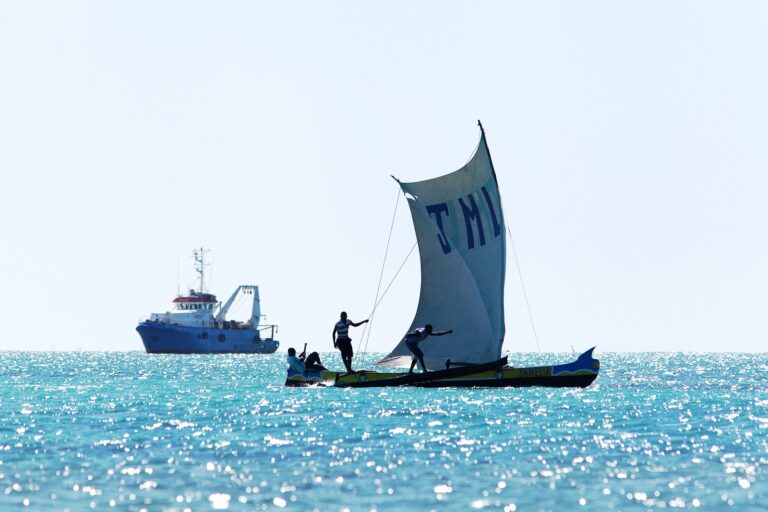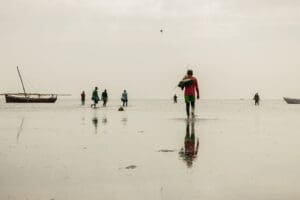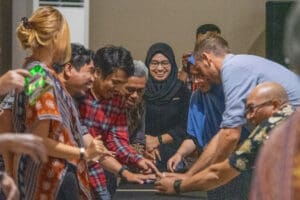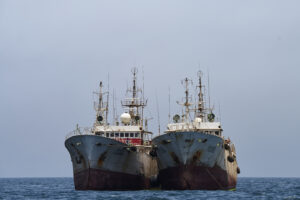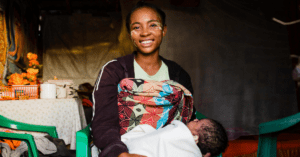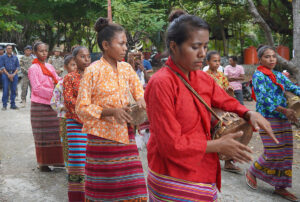Madagascar’s largest protected area, the Barren Isles Locally Managed Marine Area (LMMA) in northwest Madagascar, was lauded by the national Government on its creation in 2014 for pioneering a new model for marine resource management. By providing a collaborative management platform, LMMAs unite communities and their organisational partners under a set of common goals. At the World Parks Congress in Sydney the President of Madagascar, His Excellency Mr. Hery Rajaonarimampianina, praised the LMMA model for its benefits to food security, promoting community empowerment and fostering grassroots leadership.
The Barren Isles LMMA broke new ground in terms of its ambition and scale. It was awarded preliminary protected status from the Government of Madagascar − the first step on the road to definitive protection − in November 2014, resulting in the cessation of industrial trawling across over 4,300 km² of islands and ocean, including some of Madagascar’s most important coral reefs. With the exception of a trawling corridor running between the islands and the mainland, the waters around the Barren Isles and the coastal town of Maintirano were protected from industrial fishing, helping to uphold the rights and traditional livelihoods of small-scale fishing communities.
Despite its achievements, the protected area’s design was widely criticised by fishing communities for its failure to exclude shrimp trawling from the inshore corridor, which includes some of the most important fishing grounds near Maintirano. While pressure from traditional fishers was steadily mounting, a regional fisheries management plan was ratified by authorities in 2016, the product of extensive consultation and dialogue between stakeholders. A key result for small-scale fishers was an agreement by members of the shrimp industry association GAPCM (Groupement des Aquaculteurs et Pêcheurs de Crevettes de Madagascar) to extend the trawling ban to the inshore corridor for a trial period of one year, protecting traditional fishing grounds from the coast to the islands − an additional 500 km².
While only a pilot agreement, this voluntary closure of the corridor marked an historic step for Madagascar’s shrimp fleet, with GAPCM supporting community efforts to rebuild stocks in critical traditional fishing grounds and mangroves adjacent to the protected area. This was a progressive move towards a more sustainable fishery, setting forth the first – and currently the only – replicable model for mitigation of the longstanding conflicts between traditional and industrial fishing sectors, consistent with the President of Madagascar’s commitment to scale up locally led marine protection.
Yet at a meeting between Blue Ventures, GAPCM and the Ministry for Aquatic Resources and Fisheries in Mahajanga in February 2018 to discuss continuing the trawling exclusion for a second year, the decision was made to reopen the inshore corridor to industrial vessels.
While industry justifications for reversal of the inshore trawling ban point to the sector’s contribution to the economic development of Madagascar, figures of national employment paint a very different picture. Just 1,500 are employed in Madagascar’s industrial fishing sector, compared to an estimated 500,000 employees directly and indirectly dependent on traditional fisheries. The volume of shrimp caught by industrial and traditional fisheries each year is roughly equal, (around 3,500 tonnes each in 2012); yet for the latter that volume of catch may support up to 340 times more people.
The reintroduction of destructive bottom trawling adjacent to the Indian Ocean’s largest LMMA marks a break with recent years of headway in community-led marine conservation, that have seen over 17% of Madagascar’s inshore seabed benefit from some form of local fisheries management.
This setback heralds an unfortunate return to a challenging time for traditional fishers in the region. They must once again compete with industrial fleets for diminishing marine resources, including both shrimp and increasingly finfishes – an accessory catch which is sold on both national and international markets. They must also run the gauntlet of laying their nets in the same waters as trawling vessels, risking the destruction of the fishing gear that families depend on for their survival, and that few can afford to replace.
These events underline the need for improved recognition of the human rights of Madagascar’s traditional fishing communities, particularly regarding secure tenure rights to fishing grounds, and the introduction of marine spatial planning to mitigate conflicts between small-scale and industrial fishing sectors. These needs are emphasised in the recent motions endorsed by the country’s national LMMA network MIHARI and signed by traditional fishers from across Madagascar’s coastal regions, which were received by representatives of the Ministry of Fisheries at the national MIHARI conference in 2017.
Blue Ventures continues to support the MIHARI network to work with government partners to take steps to help safeguard the livelihoods of these communities in the face of growing outside pressures.
Contact: Kitty Brayne, Global Technical Lead LMMA Programmes
Find out more about our work rebuilding fisheries and supporting community led conservation

